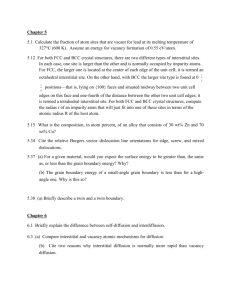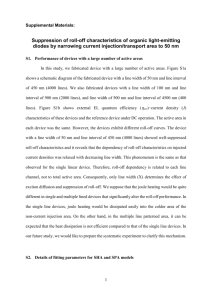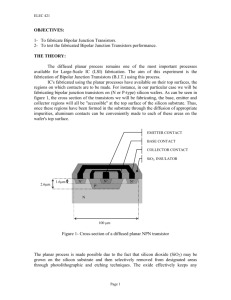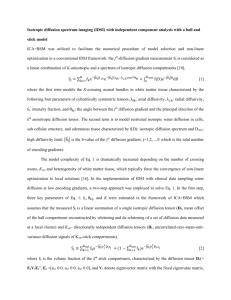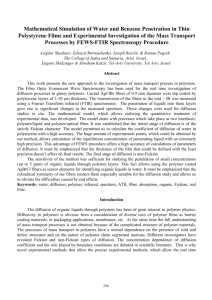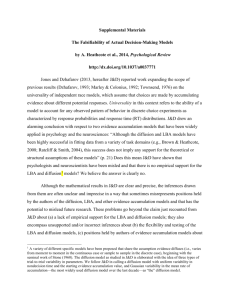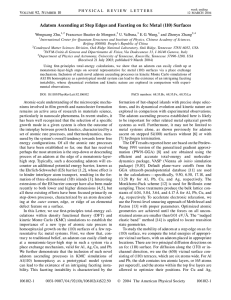Collective multi-atom diffusion in Pb-Si(111) and Ag-Ge(110)
advertisement
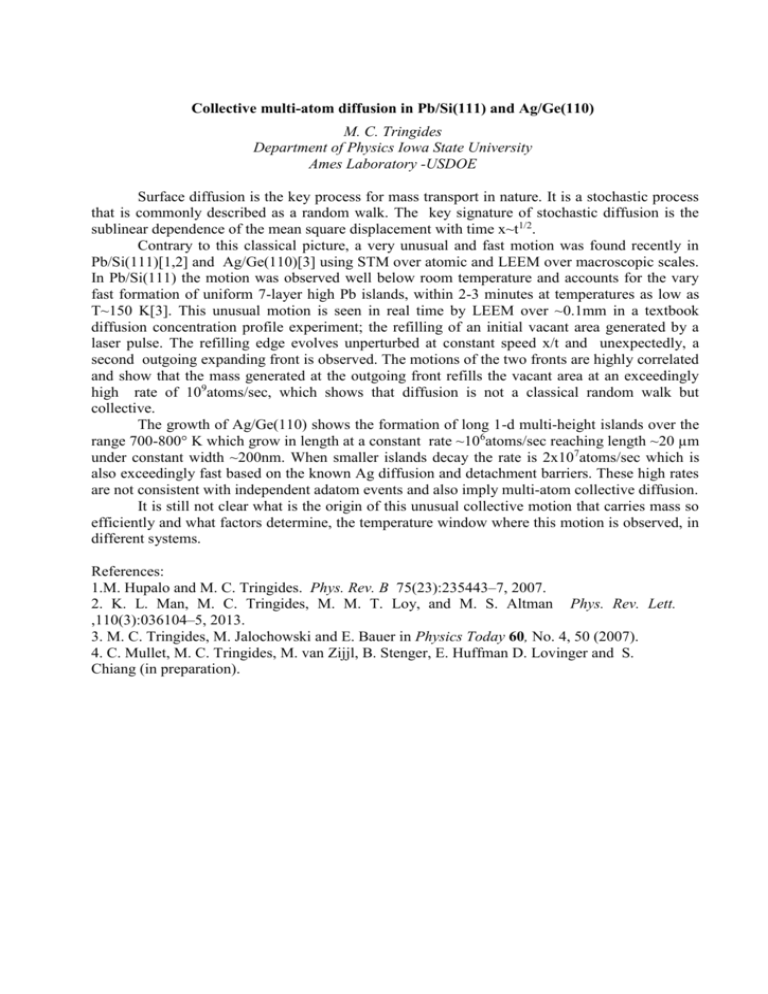
Collective multi-atom diffusion in Pb/Si(111) and Ag/Ge(110) M. C. Tringides Department of Physics Iowa State University Ames Laboratory -USDOE Surface diffusion is the key process for mass transport in nature. It is a stochastic process that is commonly described as a random walk. The key signature of stochastic diffusion is the sublinear dependence of the mean square displacement with time x~t1/2. Contrary to this classical picture, a very unusual and fast motion was found recently in Pb/Si(111)[1,2] and Ag/Ge(110)[3] using STM over atomic and LEEM over macroscopic scales. In Pb/Si(111) the motion was observed well below room temperature and accounts for the vary fast formation of uniform 7-layer high Pb islands, within 2-3 minutes at temperatures as low as T~150 K[3]. This unusual motion is seen in real time by LEEM over ~0.1mm in a textbook diffusion concentration profile experiment; the refilling of an initial vacant area generated by a laser pulse. The refilling edge evolves unperturbed at constant speed x/t and unexpectedly, a second outgoing expanding front is observed. The motions of the two fronts are highly correlated and show that the mass generated at the outgoing front refills the vacant area at an exceedingly high rate of 109atoms/sec, which shows that diffusion is not a classical random walk but collective. The growth of Ag/Ge(110) shows the formation of long 1-d multi-height islands over the range 700-800° K which grow in length at a constant rate ~106atoms/sec reaching length ~20 µm under constant width ~200nm. When smaller islands decay the rate is 2x107atoms/sec which is also exceedingly fast based on the known Ag diffusion and detachment barriers. These high rates are not consistent with independent adatom events and also imply multi-atom collective diffusion. It is still not clear what is the origin of this unusual collective motion that carries mass so efficiently and what factors determine, the temperature window where this motion is observed, in different systems. References: 1.M. Hupalo and M. C. Tringides. Phys. Rev. B 75(23):235443–7, 2007. 2. K. L. Man, M. C. Tringides, M. M. T. Loy, and M. S. Altman Phys. Rev. Lett. ,110(3):036104–5, 2013. 3. M. C. Tringides, M. Jalochowski and E. Bauer in Physics Today 60, No. 4, 50 (2007). 4. C. Mullet, M. C. Tringides, M. van Zijjl, B. Stenger, E. Huffman D. Lovinger and S. Chiang (in preparation).










